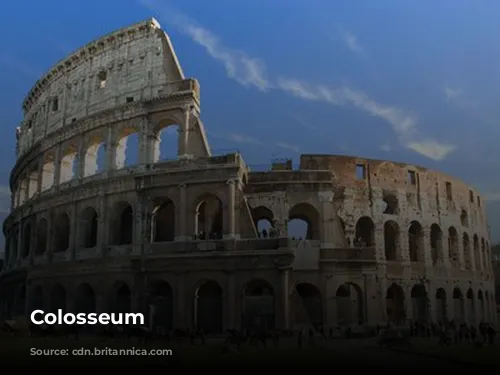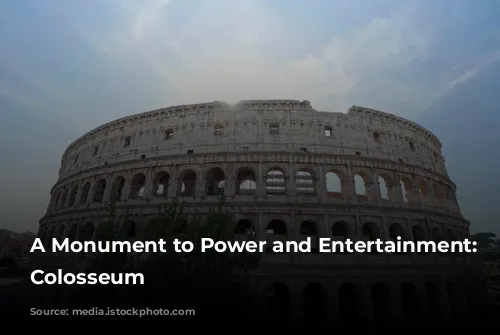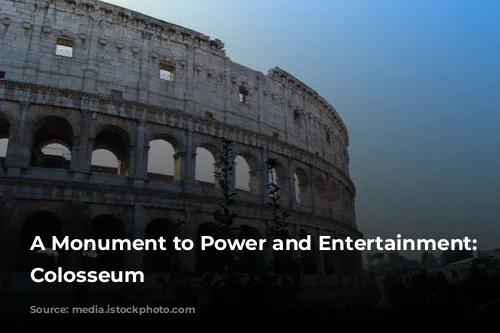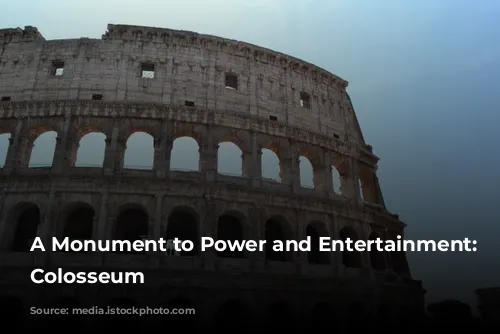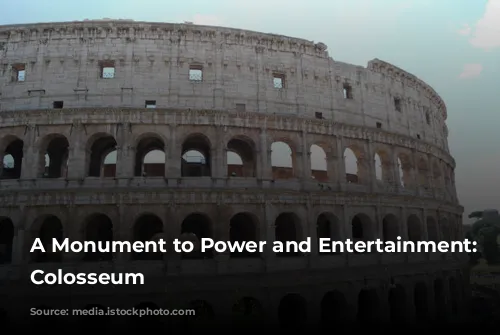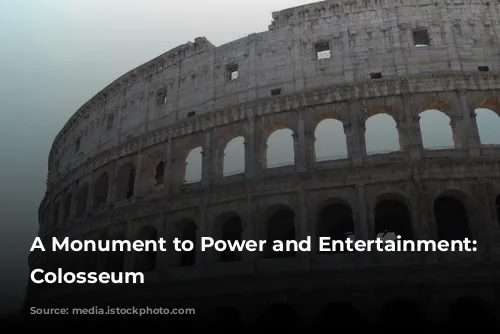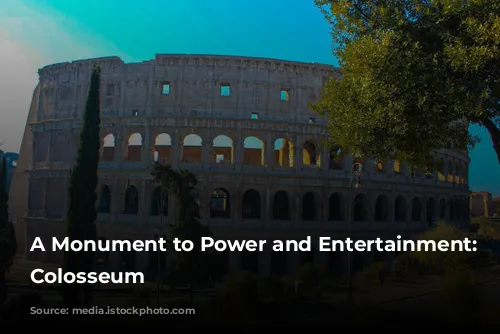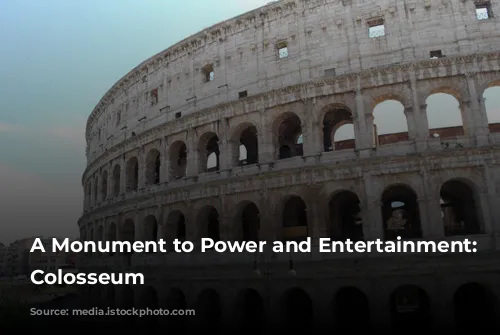The Colosseum, a towering testament to ancient Rome’s architectural brilliance, stands as one of the few surviving structures from the Roman Empire. This iconic landmark, not only a symbol of Roman power but also a major driver of tourism for Italy, attracts millions of visitors each year, eager to witness its grandeur and history firsthand.
In 2018, the Colosseum, along with the Roman Forum and Palatine Hill, generated over $63.3 million (€53.8 million) in revenue, making it the top tourist attraction in all of Italy. Its enduring popularity and historical significance have secured its place as a cornerstone of Roman tourism.
A Resilient Survivor: From Glory to Neglect and Restoration
While the Colosseum today stands as a symbol of Roman grandeur, its journey has been far from straightforward. Following the fall of the Western Roman Empire, the Colosseum fell into a state of disrepair. The arena was repurposed for other uses, becoming a fortress for the Frangipane and Annibaldi families in the 12th century. By the late 15th century, Pope Alexander VI even permitted the Colosseum to be used as a quarry.
For over a thousand years, the Colosseum was neglected, its once-glorious exterior slowly succumbing to the ravages of time. It was not until the 1990s that state-funded restoration efforts began, aiming to preserve this valuable piece of Roman history.
A Stage for Spectacle: The Colosseum’s Purpose
The Colosseum was born from an imperial desire to revitalize Rome after the tumultuous year of the four emperors, 69 CE. Emperor Vespasian, like other emperors before him, envisioned the Colosseum as a grand entertainment venue, a place for the Romans to witness gladiatorial combat, animal hunts, and even staged naval battles.
Construction began under Vespasian between 70 and 72 CE, and the completed structure was dedicated in 80 CE by his son and successor, Titus. His son, Domitian, added the fourth story in 82 CE. The Colosseum’s construction was funded with spoils from Titus’s conquest of Jerusalem in 70 CE, and tragically, it was built using enslaved Jews from Judaea.

An Architectural Masterpiece: The Colosseum’s Design
The Colosseum is a monumental amphitheater, also known as the Flavian Amphitheatre, constructed under the rule of the Flavian emperors. It’s an elliptical structure, built from stone, concrete, and tuff, reaching a height of four stories. Measuring 620 by 513 feet (189 by 156 meters), it could accommodate a staggering 50,000 spectators, drawn to witness the spectacle of gladiatorial combat.
The Colosseum’s design is a testament to Roman engineering prowess. Located east of the Palatine Hill, it occupies the grounds of Nero’s Golden House. The artificial lake that once served as the centerpiece of Nero’s lavish palace complex was drained, and the Colosseum was built in its place, a symbolic replacement of Nero’s extravagance with a public venue for the people.
Unlike previous amphitheaters, often built into hillsides for support, the Colosseum is a freestanding structure, showcasing the Romans’ mastery of engineering and construction. Its design incorporates a complex system of barrel vaults and groin vaults, and it is adorned with three tiers of arcades, each framed by engaged columns in the Doric, Ionic, and Corinthian orders. The Colosseum’s rising arrangement of columns became a foundational principle of the Renaissance, inspiring architects for centuries to come.
A Stage for Spectacle: The Colosseum’s Shows
The Colosseum was a stage for spectacle, designed to accommodate a large audience. Its 50,000 spectators were shielded from the sun by a retractable velarium, a massive awning, supported by masts extending from the building’s top story. Hundreds of sailors were responsible for manipulating the rigging, extending and retracting the velarium to create shade for the vast crowds.
The Colosseum hosted a dizzying array of events, from fierce hand-to-hand combat between gladiators and contests between men and animals to large-scale mock naval battles. The arena also witnessed a variety of cultural performances, including music and dramatic productions, offering a diverse range of entertainment to the Roman populace.
However, the Colosseum’s role in the martyrdom of early Christians is a matter of debate. While some historical accounts suggest that Christians were executed in the Colosseum, the evidence remains inconclusive.
From Glory to Ruin: The Colosseum’s Decline and Rebirth
Over time, the Colosseum’s glory faded. Medieval times saw the arena transformed into a church, then into a fortress, occupied by the powerful Frangipane and Annibaldi families. Further damage was inflicted by lightning, earthquakes, and even vandalism.
Marble seats and decorative elements were stripped from the structure, repurposed for other uses, transforming the Colosseum into little more than a quarry for over a thousand years.
In the 19th century, efforts to preserve the Colosseum gained momentum, with notable contributions by Pius VIII. The 1990s witnessed the launch of a major restoration project, aiming to revitalize the structure and ensure its survival for future generations.

A Lasting Legacy: The Colosseum Today
Today, the Colosseum remains one of Rome’s most popular tourist destinations, attracting nearly seven million visitors annually. These visitors come from all corners of the globe, drawn to its architectural grandeur, historical significance, and the echoes of the past that still linger within its walls.
Regular exhibitions showcasing the culture of ancient Rome further enrich the visitor experience, offering deeper insights into the lives and customs of the people who once walked the Colosseum’s grounds.
The Colosseum stands as a powerful reminder of Rome’s enduring legacy, a symbol of the empire’s ingenuity, power, and enduring fascination. Its story is a testament to the resilience of human creativity, the ebb and flow of history, and the enduring power of a structure that continues to inspire awe and wonder centuries after its construction.
